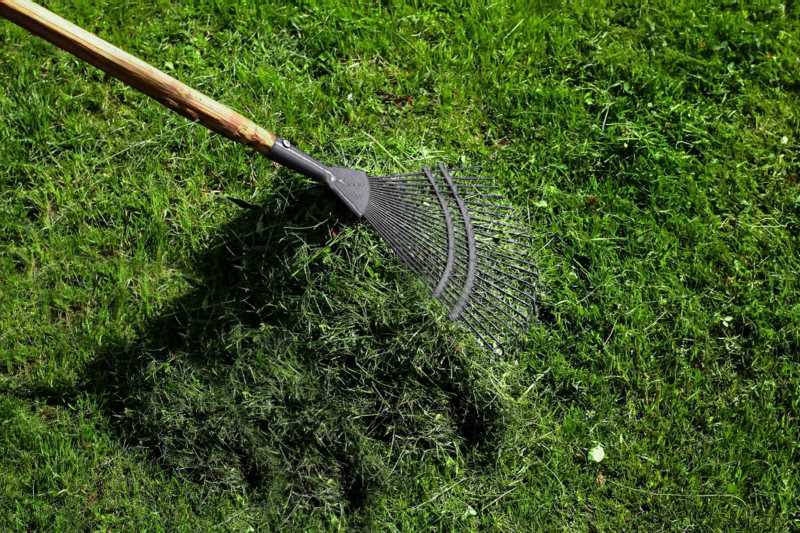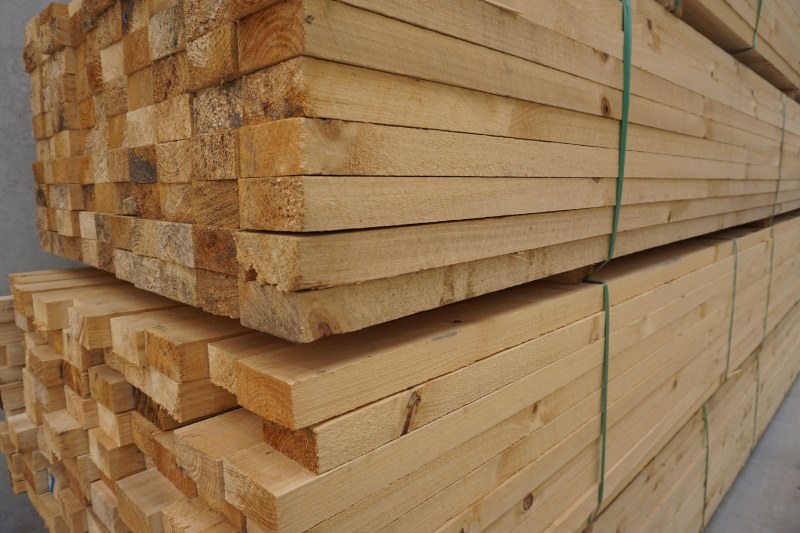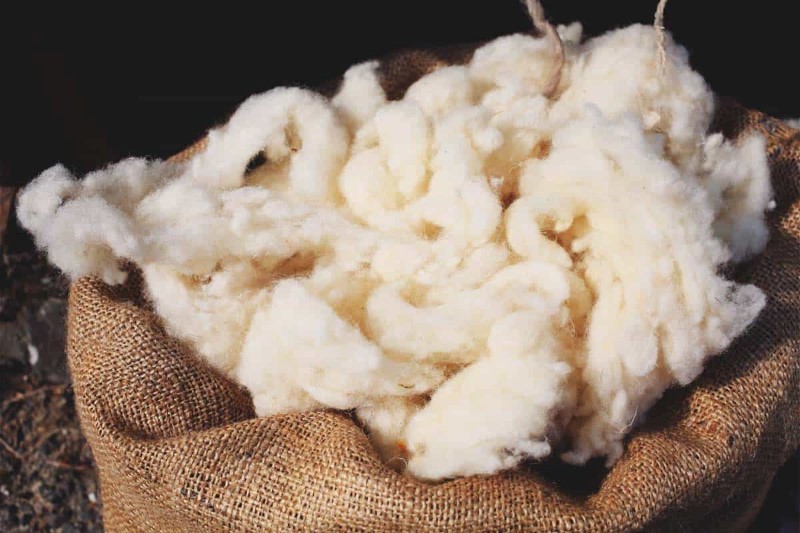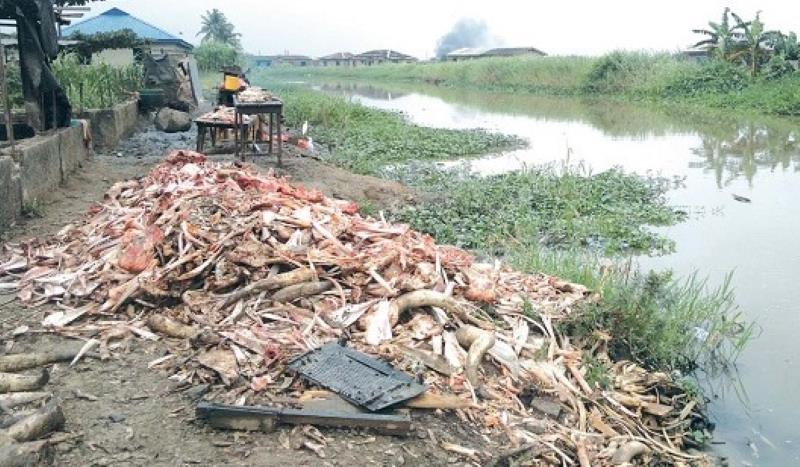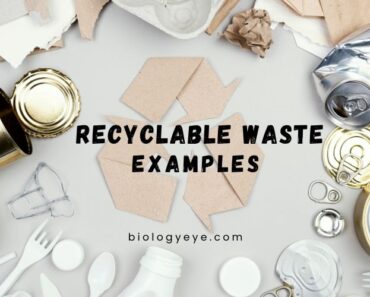Biodegradable waste or organic waste, consists of materials that can naturally break down into environmentally friendly substances over time. Examples of biodegradable waste include various organic items such as food scraps, yard waste, paper products, wood, natural textiles, animal waste, green waste, leather products, and some cleaning products. Proper management of biodegradable waste is crucial to reduce its environmental impact. Separating it from non-biodegradable waste in waste management systems enables responsible disposal methods, such as composting or energy generation. This helps to regulate methane emissions and promote environmental sustainability. Here are some common examples of biodegradable waste:
Examples
1. Food Scraps
Food scraps consist of any leftover or unused food materials that can naturally decompose over time. Common examples of food scraps include fruit and vegetable peels, coffee grounds, tea bags, eggshells, spoiled or expired food, and plate scrapings. Food scraps are organic in nature, primarily composed of carbohydrates, proteins, and fats. When discarded in landfills without proper management, these materials decompose anaerobically (in the absence of oxygen), leading to the production of methane, a potent greenhouse gas that contributes to climate change. Therefore, it is essential to handle food scraps in an environmentally responsible manner. One eco-friendly approach to managing food scraps is composting. Composting involves the controlled decomposition of organic materials, including food scraps, to create nutrient-rich compost that can be used to enrich soil for gardening and agriculture. Alternatively, food scraps can be used to feed animals or converted into biogas through anaerobic digestion, which can be used as a renewable energy source.
2. Biodegradable Plastics
Biodegradable plastics are typically derived from renewable sources like starch, corn, or sugarcane, making them distinct from traditional petroleum-based plastics. Biodegradable plastics are primarily composed of natural polymers, such as starch, which serves as the main structural component. The rate of biodegradation for biodegradable plastics can vary depending on factors such as the specific type of plastic, environmental conditions, and the presence of microorganisms. Biodegradable plastics are used in food packaging, disposable cutlery, bags, and agricultural films. Biodegradable plastics can help reduce the environmental impact of plastic waste by reducing the accumulation of non-biodegradable plastics in landfills and natural ecosystems.
3. Yard Waste
Yard waste, often referred to as green waste, is another kind of biodegradable waste generated by residential properties, parks, and landscaping activities. Yard waste is organic in nature and rich in carbon and nitrogen, making it an ideal candidate for composting. Properly managed yard waste can be turned into nutrient-dense compost, reducing the need for chemical fertilizers and improving soil structure and moisture retention. Composting yard waste also helps divert organic materials from landfills, where they can contribute to methane gas production. Yard waste include:
- Leaves
Fallen leaves from trees and shrubs are a common form of yard waste. When left to decompose naturally, they break down into nutrient-rich organic matter.
- Grass Clippings
After mowing the lawn, the grass clippings are typically collected. These clippings are high in nitrogen and organic matter, making them an excellent addition to compost piles.
- Branches and Twigs
Trimmings and prunings from trees and bushes are part of yard waste. These materials can be chipped or mulched to speed up decomposition.
- Plant Trimmings
When flowers, herbs, or other plants are pruned or trimmed, the resulting waste is considered biodegradable. These materials can also be composted or mulched.
- Weeds
Unwanted plants, including weeds, are another type of yard waste. Care must be taken when composting weeds to ensure that seeds or roots are thoroughly broken down to prevent regrowth.
4. Paper Products
Paper products made from natural fibers, such as newspapers, cardboard, paper towels, and paper plates, are considered biodegradable waste due to their organic composition. These materials are primarily derived from wood pulp or other plant fibers, and they can naturally decompose over time when exposed to environmental conditions. To facilitate the biodegradation of these paper products, it is essential to manage them in ways that promote decomposition. Composting is an effective method for breaking down paper products into nutrient-rich compost that can be used to improve soil quality for gardening and agriculture. Recycling is another eco-friendly option to reduce the environmental impact of paper products. Some examples of biodegradable paper products are:
- Newspapers
Newspapers are typically made from wood pulp, which contains cellulose fibers. Cellulose is a biopolymer that can break down relatively easily when exposed to moisture and microbial activity. In a natural environment, newspapers can degrade within a few weeks to several months, depending on factors like humidity and temperature.
- Cardboard
Cardboard is often used for packaging and shipping materials. It consists of thick layers of paperboard, which are also made from wood pulp. Cardboard can biodegrade, though it may take longer than newspapers due to its denser structure. Proper composting or recycling of cardboard is an eco-friendly way to manage this waste.
- Paper Towels
Paper towels are designed for single-use purposes, such as cleaning and drying hands. They are typically made from absorbent paper materials. Properly composted, they will break down within a few weeks to several months.
- Paper Plates
Like cardboard, disposable paper plates can biodegrade over time, but the process may take longer due to their thicker composition. Composting or proper disposal in designated organic waste bins is recommended.
5. Wood
Wooden items, such as untreated lumber and wood furniture, are considered biodegradable waste due to their natural origin. These items are primarily composed of cellulose, hemicellulose, and lignin, which are organic compounds found in the cell walls of trees and plants. Managing biodegradable wooden items responsibly involves considering their potential for reuse, recycling, or composting. Understanding the biodegradable nature of wooden items helps promote responsible waste management and contributes to sustainability efforts. Some of the commonly known biodegradable wooden products are:
- Untreated Lumber
Untreated lumber is wood that has not been chemically treated with preservatives to enhance its durability and resistance to decay. It is commonly used in construction, fencing, and various outdoor applications. Because untreated lumber lacks chemical additives, it readily decomposes when exposed to environmental conditions. Factors such as moisture, temperature, and the presence of microorganisms affect the rate of decomposition, but untreated lumber can typically biodegrade within several months to a few years.
- Wood Furniture
Wooden furniture items, such as chairs, tables, and cabinets, are often crafted from solid wood or wood veneers. These pieces can also biodegrade, but the rate of decomposition depends on various factors, including the type of wood, the finish or coatings applied to the furniture, and the environmental conditions in which they are placed.
8. Leather Products
The key component of leather is collagen, a protein that gives the material its strength and durability. Other components include water, lipids, and minerals. Leather products are inherently biodegradable because they are composed of organic matter. When exposed to the environment, leather undergoes a natural decomposition process facilitated by microorganisms such as bacteria and fungi. These microorganisms break down the collagen and other organic compounds in leather into simpler molecules. The rate of biodegradation for leather products can vary depending on several factors, including environmental conditions (humidity, temperature, and microbial activity) and the thickness of the leather. Generally, thinner and untreated leather items will decompose more quickly than thicker or heavily processed leather.
9. Animal Waste
Animal waste is primarily composed of organic matter, such as faeces and urine, along with some undigested food particles and microorganisms. It contains various organic compounds, including proteins, carbohydrates, and fats, which are natural byproducts of animal digestion. Animal waste undergoes biodegradation, a natural process in which microorganisms like bacteria and enzymes break down the organic matter into simpler compounds. This process typically occurs in the presence of oxygen (aerobic conditions) or, in some cases, without oxygen (anaerobic conditions). In aerobic conditions, the breakdown is more efficient and produces fewer odours. When managed responsibly, animal waste can be a valuable resource for agricultural and energy production, reducing the need for chemical fertilizers and harnessing renewable energy.
10. Slaughterhouse waste
Slaughterhouse waste, or abattoir waste, is primarily comprised of organic materials resulting from the processing of livestock and poultry. This waste includes blood, bones, animal carcasses, and various tissue residues. The biodegradation process for slaughterhouse waste is driven by the activity of microorganisms such as bacteria and enzymes. When exposed to suitable environmental conditions, including moisture and oxygen, these microorganisms break down the organic matter in slaughterhouse waste into simpler, non-toxic substances. This natural decomposition typically occurs over a period of weeks to months, depending on various factors like temperature and microbial activity.
11. Sewage sludge
Sewage sludge is a category of biodegradable waste that is produced from the treatment of domestic and industrial wastewater in sewage treatment plants. It consist of a mixture of organic and inorganic materials, including microorganisms, organic matter, nutrients, and some contaminants. The biodegradation process for sewage sludge is primarily driven by microbial activity, where bacteria and other microorganisms feed on the organic matter present in the sludge. This natural decomposition process occurs both in the presence of oxygen (aerobic digestion) and in its absence (anaerobic digestion). During digestion, organic compounds are broken down into simpler, less harmful substances, such as carbon dioxide, water, and stabilized organic matter. To manage sewage sludge responsibly, many sewage treatment plants utilize various treatment methods. These may include anaerobic digestion to generate biogas for energy, composting to produce nutrient-rich soil amendments, or incineration for volume reduction and energy recovery. Proper treatment ensures that sewage sludge can be beneficially recycled and utilized while minimizing its environmental impact.
12. Hospital waste
Biodegradable hospital waste typically includes items like used surgical gauze, bandages, tissues, and certain types of disposable medical equipment made from natural materials. These materials can naturally decompose over time when exposed to environmental conditions and microbial activity. Microorganisms, including bacteria and enzymes, play a vital role in breaking down the organic content in hospital waste into simpler, less harmful substances. Proper management of biodegradable hospital waste is crucial to minimize environmental and public health risks. It often involves segregation, safe storage, and disposal methods that facilitate biodegradation, such as composting or incineration under controlled conditions. However, it is important to note that not all hospital waste is biodegradable, as it also includes non-biodegradable items like plastics and hazardous waste, which require specialized disposal methods to mitigate their environmental impact.
- 12 Examples of Biodegradable Waste - October 13, 2025
- 18 Examples of Non-biodegradable Waste - October 13, 2025
- 15 Examples of Renewable Resources in Everyday Life - October 13, 2025





